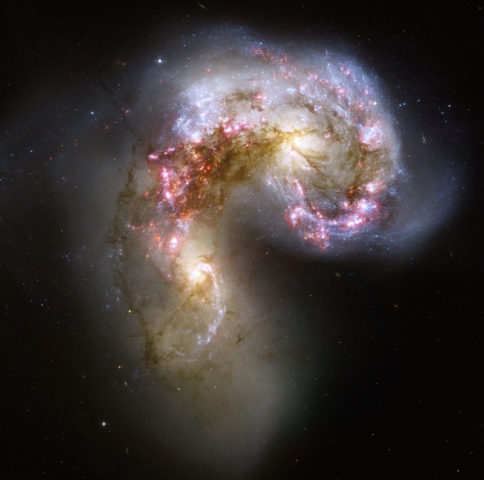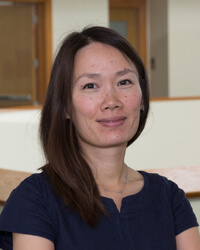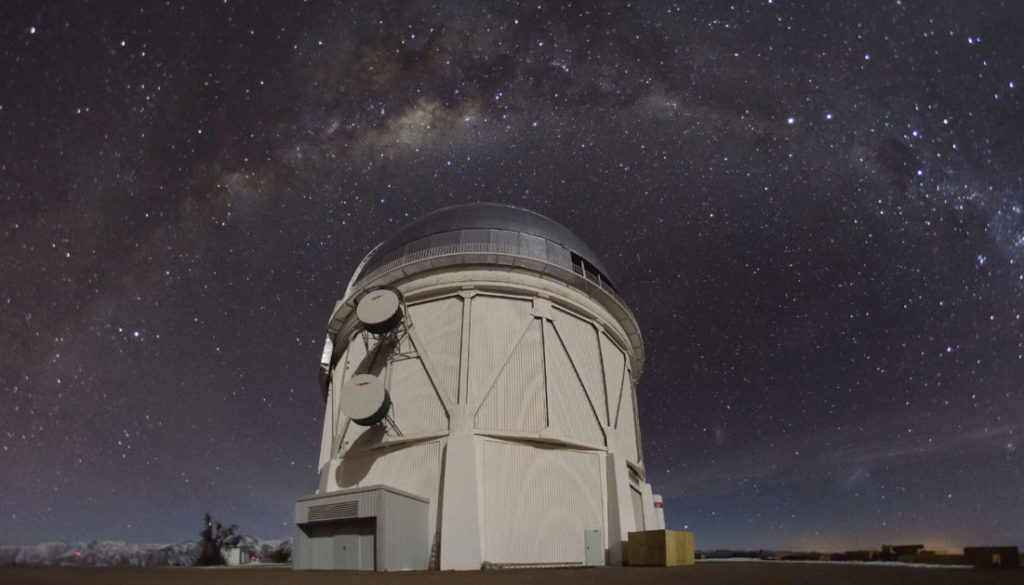Texas A&M Astronomers Making Cosmic Inroads with NSF Grants
Three Texas A&M University astronomers have their sights set on new astrophysical insights involving the Milky Way Galaxy and beyond, thanks to the help of recent grants from the National Science Foundation.
Jennifer Marshall, Casey Papovich and Kim-Vy Tran each led proposals selected for funding as part of the latest round of awards announced earlier this fall by the NSF Division of Astronomical Sciences (AST). Each is serving as a principal investigator for three of the 97 total projects funded from the more than 600 that were received, according to AST officials.
In a year in which the NSF itself acknowledged an exceptionally tight funding situation, particularly for astronomy, AST officials note the funding rate was only 16 percent per submitted project and 17 percent per submitted proposal. Both rates are roughly two percentage points higher than those of FY 2013, a year in which a fourth Texas A&M astronomer, Lucas Macri, was selected to receive funding.
“The over-subscription the past few years has and continues to be truly mind-boggling,” Tran said. “It’s no secret that NSF funding for astronomy is particularly competitive, and the fact that three separate research proposals by three principal investigators in our relatively small astronomy group were awarded in the same year is absolutely amazing!”
In addition to being fellow members of George P. and Cynthia Woods Mitchell Institute for Fundamental Physics and Astronomy, all four astronomers came to Texas A&M during the 2008-09 academic year as part of the university’s previous faculty reinvestment program initiated by former Texas A&M president Dr. Robert M. Gates.
“In only eight years here at Texas A&M, we have been able to recruit among the best young astronomers in the world, as shown by their success in competing for research grants from the National Science Foundation,” said Nicholas B. Suntzeff, university distinguished professor of physics and astronomy and director of the Texas A&M astronomy program. “There are many reasons why such good astronomers want to come to Texas A&M — a great university, great undergraduate and graduate students, generous support from the College of Science and especially the support of George Mitchell and his family, who have donated money toward two buildings, numerous endowed chairs and professorships, and to create the Mitchell Institute, where the daily interaction of physicists and astronomers in fundamental physics has produced an exciting environment to study the universe.”


Marshall’s $250,000 project seeks to measure the composition of M dwarf stars — the most numerous type of star in our Milky Way Galaxy and yet the least understood because they are so faint and complex. Her work focuses on perfecting low-resolution optical spectroscopic techniques that will be used in tandem with standard high-resolution methods to analyze binary star pairs involving an M dwarf and a brighter star to obtain both empirical relations and more accurate distance estimations.
Given the current era of wide-field photometric and spectroscopic surveys, Marshall says that M dwarf and subdwarf stars will become important targets for a wide range of science, from extrasolar planet searches, to better constraints of Galactic halo and disk dynamics, to the study of the Milky Way’s own merger history. In addition, the work will involve a wide range of observational techniques, providing invaluable training for the graduate and undergraduate students supported by both the grant and the Munnerlyn Astronomical Instrumentation Laboratory that Marshall also manages.
“The resulting relational insight will be increasingly important as astrophysics enters the age of large-scale optical spectroscopic surveys,” Marshall said. “The kind of preliminary groundwork we are doing with this project is vital to ensuring that astronomers can take full advantage of the large datasets that will be produced by these surveys.”


On the large-scale survey front, Papovich plans to use his $200,000 grant to fund a comparative study on the formation of galaxies in “urban” environments, characterized by great cities of clusters of galaxies, versus “rural” areas, or more isolated galaxies within the universe. To do so, Papovich proposes to undertake the largest survey of distant-universe galaxies ever conducted, the DECam/IRAC Galaxy Environment Survey (DIRGES). In his study, he will analyze an area about 100 times as large as that of the full Moon and cover a cosmological volume of 1 billion cubic light-years — an area more than 15 times that of the COSMOS survey.
Using deep data taken from the new, wide-field dark energy camera DECam at Cerro Tololo Inter-American Observatory (CTIO) in Chile and the infrared capabilities of NASA’s Spitzer Space Telescope, Papovich will study these galaxies as they formed at times 7 to 10 billion years ago. By measuring how these galaxies grow their stars and dark-matter halos contemporaneously during the epochs in which they formed, Papovich hopes to find answers as to why galaxies in rural areas, like the Milky Way, grow differently from their cousins in urban environments.
“Our own Milky Way galaxy is in a distant suburb of a large city of galaxies called the Virgo cluster, about 60 million light-years distant, and the properties of the Milky Way differ greatly from those of galaxies in the Virgo cluster,” Papovich said. “There has been a great push to measure the differences in how galaxies grow in the rural areas compared to galaxies in urban areas, but these past studies have used only small surveys.”
Tran’s $317,000 proposal focuses on determining how the stellar birthrate in cities of galaxies, otherwise known as galaxy clusters, is regulated in the distant universe. By tracking the gas that provides the fuel to make new stars, Tran hopes to provide a better understanding as to why some galaxies stopped forming stars a very long time ago, while galaxies such as our own Milky Way continue to form new stars every year. Her study combines observations taken with some of today’s most powerful telescopes, including the Hubble Space Telescope and W.M. Keck Observatory.
Tran’s award also includes seed funding for a new outreach program, “I Am Science,” that will help address the lack of diversity in all sciences. Tran plans to create a series of short videos featuring scientists from all backgrounds sharing their stories to increase general awareness about science careers and hopefully inspire the next generation of potential scientists. In addition, Tran will work with the College of Science’s Educational Outreach and Women’s Programs Office to encourage use of the series in middle-school classrooms.
“Our NSF awards ensure that Texas A&M students continue to have abundant and exciting opportunities to work on cutting-edge research,” Tran said. “We get to explore these deep questions about our fascinating universe and, in the process, also prepare science programs for our future with the Giant Magellan Telescope. How awesome is that?”
To learn more about each individual project or Texas A&M astronomy in general, visit http://astronomy.tamu.edu.
# # # # # # # # # #
About Research at Texas A&M University: As one of the world’s leading research institutions, Texas A&M is in the vanguard in making significant contributions to the storehouse of knowledge, including that of science and technology. Research conducted at Texas A&M represents annual expenditures of more than $820 million. That research creates new knowledge that provides basic, fundamental and applied contributions resulting in many cases in economic benefits to the state, nation and world. To learn more, visit http://research.tamu.edu.
-aTm-
Contact: Shana K. Hutchins, (979) 862-1237 or shutchins@science.tamu.edu
The post Texas A&M Astronomers Making Cosmic Inroads with NSF Grants appeared first on Texas A&M College of Science
